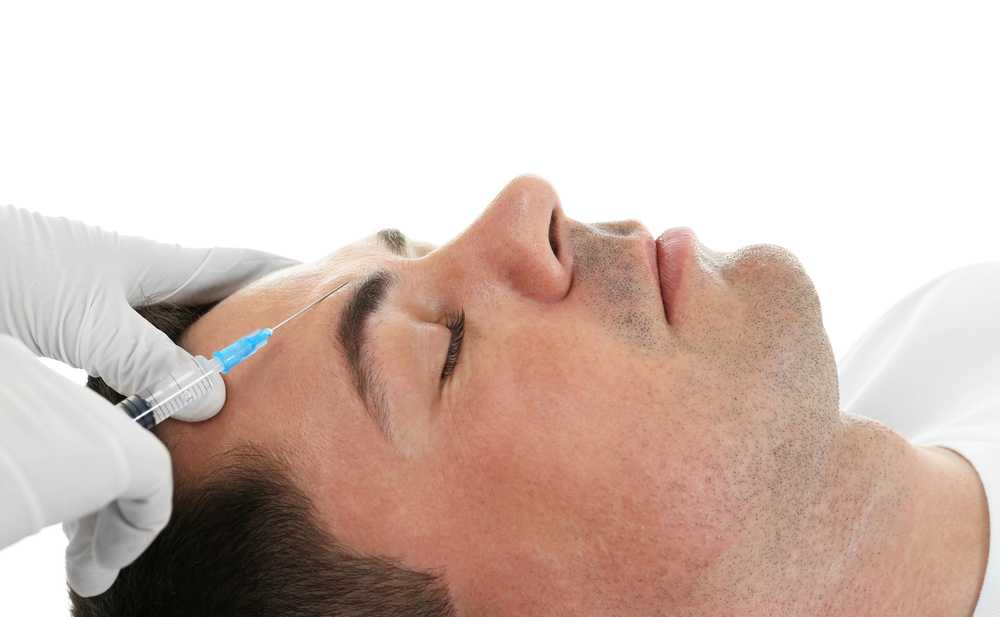When a person has a larger forehead, this may result from hair loss, genetics, or other cosmetic procedures.
One surgical option is known as hairline lowering surgery or forehead reduction surgery, which can assist with balancing the proportions of your face.
By definition, forehead reduction surgery is a cosmetic procedure that can help to decrease the height of your forehead.
Keep reading to get informed about forehead reduction surgery, recovery expectations, and potential surgery risks.
Questions Before Getting Forehead Reduction Surgery
What should you ask yourself before seeking the benefits of forehead reduction surgery ?
- Do you have a high hairline, and you want your hairline lowered?
- Do you have a large forehead, and you want your forehead shortened?
- Is your hair thick and disproportionate to the height of your hairline?
- Are your eyebrows low or heavy eyebrows, and would you like to change the proportions of your face?
- Have you recently had a hair grafting procedure and would like to increase your hairline?
- Have you had a brow lift procedure recently and wished to move your hairline forward?
To have a successful forehead reduction surgery, you must have good scalp laxity in order to have the ability to be able to get the scalp tissues to stretch.
If pattern balding runs in your family then or medical conditions that can lead to surgery complications, forehead reduction surgery may not be an option for you.
Procedure for Forehead Reduction Surgery
When it comes to the day that you first partake in forehead reduction surgery, your plastic surgeon will take the following steps:
- A surgical skin marker will be used to mark the hairline and area of the forehead to be removed, and a careful cut will be made along the hairline to preserve the nerves and hair follicles.
- The whole forehead, from the hairline to above the brows, is numbed with the aid of a local anesthetic.
- The pretrial incision is made along the marked area of the forehead and hairline, carefully separating the skin from the connective tissue that is underneath and cutting out the portion that has been marked to be removed.
- The top incision that has occurred along the hairline is pulled down in order to join the forehead incision to close the gap and shorten the forehead.
- In order to minimize scar formation so that it can be hidden almost totally by the hairline when the hair regrows, the skin is sutured together.
Although forehead reduction surgery decreases the height of the forehead and can alter the appearance of the eyebrows, it does not necessarily raise up the eyebrows.
Recovery from Forehead Reduction Surgery
If you are wondering how long the recovery process is for forehead reduction surgery, you should consider that most patients are able to return home within a few hours following the surgery, but you will have to return to the office for suture removal during the following week and a half.
Then you will be requested to return for observation and post-operative check ups approximately two to four weeks after the surgery occurs.
Being that forehead reduction surgery involves a serious incision, it will become vitally important to keep the wound clean and to give it the chance to effectively heal properly.
Get in the habit of checking for any signs of infection at the site of the incision frequently. You should expect post-operative instructions on how to properly care for your surgery incision, how to reduce pain, and how to prevent swelling and infection from your doctor.
Potential Risks and Side Effects
Let’s not fool ourselves into thinking that even with the most modern technology that surgical procedures can’t come with risks associated with them.
When it comes to forehead reduction surgery, there could be a possibility of experiencing:
- Allergy to general or local anesthesia
- Bleeding during and after surgery
- Hair loss where the hairline was cut
- Infection of the incision area
- Nerve damage where the incision was made
- Paresthesia at the surgical site
- Side effects of general anesthesia
- Scarring after the healing of the incision
In most cases, the benefits of forehead reduction surgery surpass any risks that are involved if the surgery is performed by a skilled professional.
Final Thoughts
Simply put, whether or not you need a forehead reduction surgery comes down to if you are a good candidate to be able to undergo the procedure for hairline advancement safely, and you simply can’t stand looking at your high forehead that they dislike.
Remember, men who anticipate that they will be suffering from hair loss are not prime candidates for forehead reduction surgery because the incision will end up being even more visible if the hairline is totally lost.
You would be advised to see your doctor first to make sure that you aren’t facing any medical problems, have a history of scarring really badly, or that you have unrealistic expectations before you go any further towards forehead reduction.






